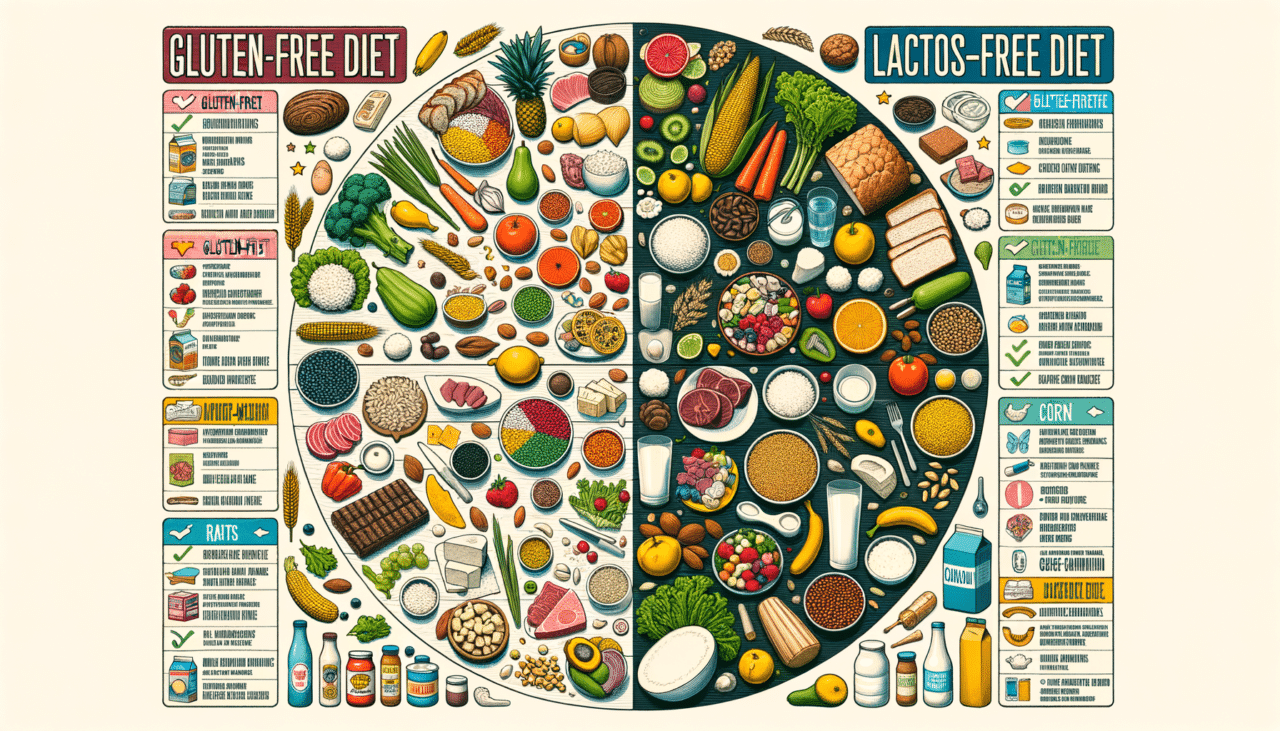In the ever-evolving landscape of dietary preferences and requirements, understanding the nuances between different diet plans is crucial. Two popular dietary choices that often come up in health and wellness conversations are the gluten-free diet and the lactose-free diet. While both are essential for individuals with specific intolerances, they cater to different needs and health goals. This article will delve into the key differences between these two diets, providing a detailed comparison to help you make an informed decision about which is best suited for your lifestyle.
Understanding the Basics
Gluten-Free Diet
A gluten-free diet is primarily designed for individuals with celiac disease, gluten sensitivity, or wheat allergies. Gluten is a protein found in wheat, barley, rye, and triticale. People who follow a gluten-free diet eliminate all foods containing these grains to avoid adverse health effects such as digestive issues, fatigue, and nutrient malabsorption.
Key Characteristics of a Gluten-Free Diet:
– Elimination of Gluten-Containing Grains: Avoidance of wheat, barley, rye, and derivatives like malt and brewer’s yeast.
– Substitute Grains: Incorporation of gluten-free grains such as rice, corn, quinoa, and buckwheat.
– Label Reading: Vigilance in reading food labels to identify hidden sources of gluten.
– Nutrient Focus: Ensuring adequate intake of fiber, iron, and B vitamins that may be lacking due to the exclusion of fortified wheat products.
Lactose-Free Diet
A lactose-free diet is tailored for individuals with lactose intolerance, a condition where the body lacks the enzyme lactase, necessary to digest lactose found in dairy products. This diet involves avoiding or reducing the intake of lactose to prevent symptoms like bloating, diarrhea, and abdominal pain.
Key Characteristics of a Lactose-Free Diet:
– Dairy Substitutes: Use of lactose-free or plant-based milk alternatives such as almond, soy, or oat milk.
– Label Awareness: Checking labels for lactose content in processed foods that may contain dairy derivatives.
– Calcium and Vitamin D Intake: Ensuring adequate consumption of these nutrients from non-dairy sources like leafy greens and fortified products.
– Digestive Enzyme Supplements: Utilization of lactase enzyme supplements to help digest lactose when consuming dairy.
Comparative Table: Gluten-Free Diet vs. Lactose-Free Diet
| Feature | Gluten-Free Diet | Lactose-Free Diet |
|---|---|---|
| Primary Focus | Eliminating gluten-containing grains | Avoiding or reducing lactose-containing dairy products |
| Health Conditions | Celiac disease, gluten sensitivity, wheat allergy | Lactose intolerance |
| Key Foods to Avoid | Wheat, barley, rye, triticale | Milk, cheese, yogurt, ice cream |
| Common Substitutes | Rice, corn, quinoa, gluten-free oats | Almond milk, soy milk, coconut milk |
| Nutrient Considerations | Fiber, iron, B vitamins | Calcium, Vitamin D |
| Supplementation | Gluten-free multivitamins | Lactase enzyme supplements |
| Label Reading | Essential for identifying hidden gluten | Essential for identifying hidden lactose |
| Dining Out Tips | Choose restaurants with gluten-free menus | Opt for restaurants with dairy-free options |
| Potential Challenges | Limited food choices, risk of nutrient deficiencies | Risk of nutrient deficiencies, finding suitable substitutes |
Making the Right Choice
Choosing between a gluten-free and a lactose-free diet depends largely on individual health needs and specific intolerances. It is important to consult with a healthcare professional or a registered dietitian before making significant dietary changes, especially to ensure nutritional adequacy and avoid unintended health issues.
Considerations for a Gluten-Free Diet:
- Health Necessity: Essential for those diagnosed with celiac disease or gluten sensitivity.
- Lifestyle Adaptation: Requires careful planning and preparation to avoid cross-contamination and hidden sources of gluten.
- Market Availability: Growing availability of gluten-free products in supermarkets and restaurants.
Considerations for a Lactose-Free Diet:
- Health Necessity: Necessary for individuals with lactose intolerance to prevent digestive discomfort.
- Diet Flexibility: Offers more flexibility with the availability of lactase supplements for occasional dairy consumption.
- Product Variety: Wide range of lactose-free and plant-based dairy alternatives available.
Conclusion
Both gluten-free and lactose-free diets serve essential roles for individuals with specific dietary needs. While they each present unique challenges and benefits, the right choice ultimately depends on your personal health requirements and lifestyle preferences. By understanding the distinctions between these two dietary plans, you can better navigate your options and maintain a balanced, healthy diet

Comments (0)
There are no comments here yet, you can be the first!